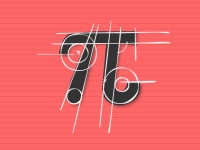How to Celebrate Pi Day in Your Classroom
Your content has been saved!
Go to My Saved Content.Editor's Note: This post is co-authored by Alex Filippenko, Professor of Astronomy at University of California, Berkeley.
Pi Day is coming on March 14! And not just any old Pi Day, but an "Epic Pi Day" on 3.14.15 at 9:26:53, corresponding to the first 10 digits of pi (3.141592653). This happens only once per century -- truly a "once-in-a-lifetime event" for most of us.
Irrational Yet Entertaining
Why pi? Beloved worldwide, pi is simply the never-ending number with no repeating patterns. (Π = 3.14. . .) Being irrational, it cannot be represented as the quotient of two integers. It is used to calculate the circumference of a circle -- any circle -- among a multitude of other applications in math, physics, and engineering. Pi appears behind the scenes in almost countless ways across many disciplines.
Pi Day was founded at the Exploratorium, San Francisco's interactive science museum, and it has been celebrated there every year since 1988. But Pi Day activities also spread to other locations nationwide and even worldwide. In 2009, the U.S. House of Representatives declared March 14 (3.14) to be National Pi Day. They passed resolution HR 224 to celebrate the importance of math, science, and education in our lives. This day provides a chance to spark interest in learning among students and the general public.
No longer reserved only for the geek culture, pi is fun, approachable, and entertaining. We have developed a new website, piZone.org, to promote National Pi Day and the importance of a strong STEAM (science, technology, engineering, arts, and math) education. Through videos, online games, activities, demos, and events, it engages students, educators, and the public in the fun of action learning as a means of inspiring the next generation of scientists, researchers, doctors, educators, and techies who will drive life-changing innovation. Math and science are present in all of our everyday lives. All technology, from the wheel to the Smart Phone, utilizes physical laws that are described in terms of mathematics.
4 Servings of Pi
Here are some specific activities that can be used in the classroom. All of these, and many more, are available on piZone.org. This is just a taste of pi.
1. Remember That Number
Though pi is never-ending, in practice one doesn't actually need many of its digits. For example, the circumference of the Earth can be calculated to a precision of 1 centimeter with just the first 10 digits of pi. Learning these first ten digits is, well, as easy as pi (3.141592653) -- it's manageable and accessible. You can simply visualize a calendar plus digital clock on 3.14.15 at 9:26:53. Or go to our Watch page and sing along with our Pi Song to the tune of the ABCs.
Alternatively, learn a sentence in which the letter count of each word corresponds numerically to the first 10 numbers in pi, such as "Wow, I made a short memorable pi string, could you?" (3 1 4 1 5 9 2 6 5 3). Or think of it as memorizing the 10 digits of a telephone number: 314-159-2653.
2. Taking Measurements
To see that the circumference of a circle divided by its diameter is a bit more than 3, here's an easy demo. Take a toilet-paper roll and measure its diameter. Cut it along its long dimension, unwrap it, and then measure the length of the side that was cut. It will be pi (or a little more than 3) times the diameter. Alternatively, you can simply wrap string around any circular or cylindrical object, like a soup can, pizza, or pie. Then take that string and place it across the diameter in slightly more than 3 segments.
3. Interactive Games
Should you have access to a computer, there are interactive games on piZone.org, such as the following.
- Piece of Pi: Help build up pi! When you first join the website by entering your email address, you automatically add another digit to pi -- the digit corresponding to 1 plus the number of people who preceded you. As more people join, the sequence approximating pi becomes progressively longer. The program displays your number in the sequence along with the associated digit of pi. You also get some interesting facts about your number.
- Slice of Pi: Here, visitors simply enter up to a 10-digit number, and they can see how far into the series their number first occurs within the first 200 million digits of pi. It's fun to check your birthday date, phone, or favorite lotto numbers.
4. Worksheets and Videos
piZone.org has many printable worksheets with activities like word searches, jumbles, and crossword puzzles that emphasize relevant words such as circle, diameter, and circumference. There are also some videos ("A Brief Introduction to Pi," "Pi in Pop Culture and Fun Facts," and "A Brief History of Pi") from which teachers can draw content for their classes. Other videos include a clip from the Exploratorium and demos of folding origami using the digits 0 through 9.
piZone.org is the go-to place for pi, although you can also start by clicking here for a special Pi Activities download (MS Word). We want you to share what you did on Pi Day (or at any other time) through stories, videos, and images, so that we may continue to build the website into a community-driven resource for pi. Pi-ticipate and "Post Your Pi" in the Play section.
And of course, we'd also like to hear from you in the comments section following this post.
